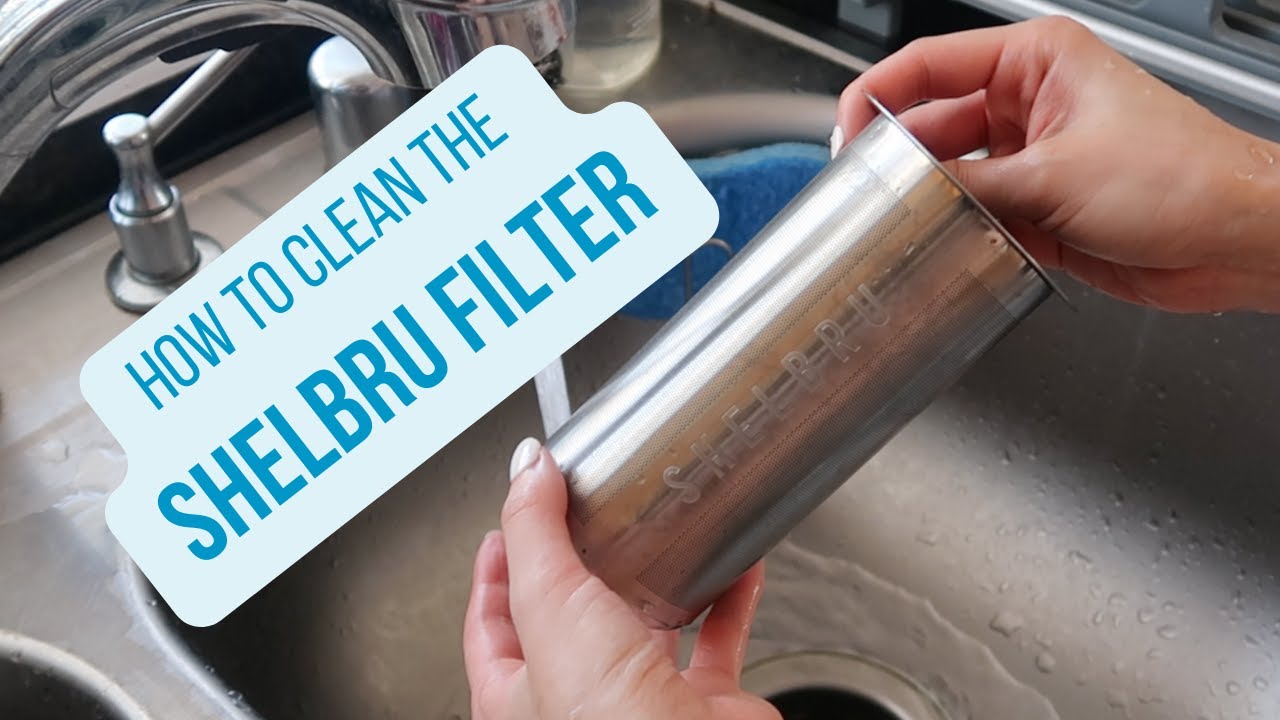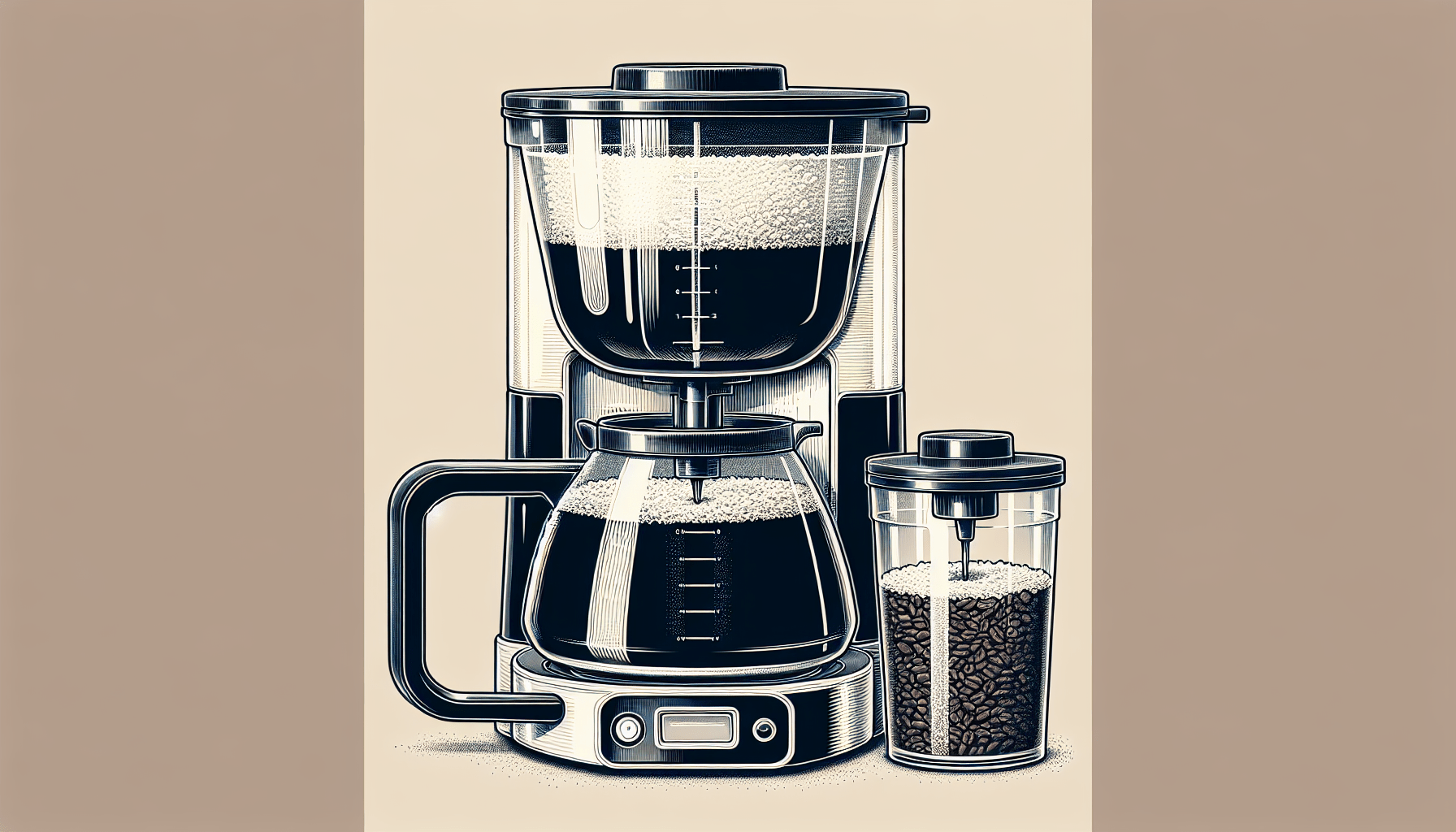So you’ve been enjoying your daily cup of smooth and refreshing cold brew, but now you’re faced with a not-so-smooth situation – a clogged filter in your beloved cold brew maker. Don’t worry, we’ve got you covered! In this article, we’ll walk you through simple and effective steps to tackle that pesky clog and get your cold brew maker back in pristine condition. With just a few minutes of your time, you’ll be back to enjoying that perfectly brewed cup of cold goodness in no time. Let’s dive in!
Troubleshooting clogged filters
Identify the signs of a clogged filter
When you notice slow drip or brewing time, as well as weak or bitter tasting cold brew, it is likely that your filter is clogged. Additionally, if you observe visible sediment or grounds in your brewed cold brew, it could be an indication of a clogged filter. Identifying these signs is crucial to ensuring the quality of your cold brew.
Understanding the reasons behind clogging
To effectively troubleshoot clogged filters, it’s important to understand the reasons behind the clogging. One common cause is the use of fine coffee grounds, which can easily slip through the filter mesh and accumulate, leading to blockage. Another reason is improper grinding of coffee beans – if the beans are ground too finely, it increases the chances of clogging. Moreover, using filters of poor quality or not filtering the cold brew before storing it can also contribute to clogging.
Importance of regular filter maintenance
Regular filter maintenance is essential to ensure the longevity and optimal performance of your cold brew maker. Neglecting proper maintenance can lead to increased clogging frequency and the need for frequent filter replacements. By taking proactive measures to clean and maintain your filter, you can prolong its lifespan, save money, and continue enjoying delicious, smooth cold brew coffee.
Preventive measures to avoid clogging
Use coarse coffee grounds
One effective preventive measure to avoid clogging is using coarse coffee grounds. Coarse grounds have larger particles, making it less likely for them to pass through the filter mesh and cause blockages. Coarser grounds allow for a slower extraction process, resulting in a cleaner and smoother cold brew.
Properly grind your coffee beans
In addition to using coarse grounds, it’s important to properly grind your coffee beans. Aim for a medium to coarse grind, as this will ensure the optimal extraction of flavors and reduce the risk of clogging. Avoid grinding the beans too finely, as this can lead to coffee grounds slipping through the filter mesh and resulting in clogs.
Invest in a high-quality filter
Investing in a high-quality filter is crucial for preventing clogs. Look for filters made from durable materials, such as stainless steel or BPA-free plastic, that are designed specifically for cold brew makers. These filters often have finer mesh screens that effectively trap coffee grounds while allowing the flavorful oils to pass through.
Filter your cold brew before storing
Filtering your cold brew before storing it can significantly reduce the chances of clogging. As cold brew is typically brewed with a higher coffee-to-water ratio, there is a higher concentration of coffee grounds. By straining the cold brew through a separate filter or using a resealable filter bag, you can remove any remaining sediment and grounds, preventing them from accumulating and causing clogs.
Steps to clean a clogged filter
Gather necessary tools and materials
Before cleaning your clogged filter, gather the necessary tools and materials. You will need a cleaning solution (either homemade or commercial), a soft-bristle brush or sponge, and access to water for rinsing.
Disassemble the cold brew maker
Carefully disassemble your cold brew maker, following the manufacturer’s instructions. This typically involves removing the lid, decanter, and any removable parts, such as the drip tray or spigot.
Remove the clogged filter
Once disassembled, identify the clogged filter and remove it from the cold brew maker. Gently detach the filter from any surrounding components, such as the filter housing or support structure. Take care not to damage the filter or the cold brew maker during this process.
Soak the filter in a cleaning solution
Prepare a cleaning solution by diluting vinegar, baking soda, or citric acid in water. Soak the clogged filter in the cleaning solution for a sufficient amount of time, typically 15-30 minutes. The cleaning solution will help break down any trapped coffee oils and grounds, loosening the clog.
Brush or scrub the filter
After soaking, use a soft-bristle brush or sponge to gently scrub the filter. Pay close attention to the areas with visible clogs, ensuring that you remove any remaining coffee grounds or residue. Be careful not to scrub too vigorously as it may damage the filter.
Rinse and dry the filter
Thoroughly rinse the filter with clean water to remove any remnants of the cleaning solution and loosened debris. Ensure that all the lingering clogs are completely removed. After rinsing, allow the filter to air dry completely or use a clean towel to pat it dry before reassembly.
Assemble the cold brew maker
Once the filter is completely dry, reassemble the cold brew maker following the reverse order of disassembly. Make sure all components are securely fitted and aligned properly. This is also an excellent opportunity to clean other parts of the cold brew maker, such as the decanter or the brewing chamber, before continuing to make your next batch of cold brew.
Homemade cleaning solutions for filters
Vinegar solution
A vinegar solution is a popular and cost-effective option for cleaning clogged filters. Mix equal parts of white vinegar and water to create the cleaning solution. The acidity in the vinegar helps break down the coffee oils and residue, effectively unclogging the filter.
Baking soda solution
Another effective homemade cleaning solution is a baking soda mixture. Mix 2 tablespoons of baking soda with warm water to create a paste-like consistency. Apply the paste to the clogged areas of the filter and gently scrub. Baking soda acts as a natural abrasive, aiding in removing stubborn clogs.
Citric acid solution
Citric acid can also be used to clean clogged filters. Dissolve 1-2 tablespoons of citric acid powder in warm water to create a cleaning solution. Soak the filter in this solution for 15-30 minutes, then proceed to brush or scrub the filter to remove any remaining clogs.
Using commercial cleaning products
Reviewing available commercial options
If you prefer using commercially available cleaning products, there are several options specifically designed for cleaning cold brew filters. These products often come in the form of concentrated solutions or tablets. Always read the product labels for specific instructions and compatibility with your filter and cold brew maker.
Following the product instructions
When using commercial cleaning products, it is important to carefully follow the instructions provided by the manufacturer. Each product may have different usage guidelines, such as dilution ratios or recommended soaking times. Following these instructions will ensure the effectiveness of the cleaning product and minimize the risk of damage to your filter or cold brew maker.
Alternative cleaning methods
Using a dishwasher
Some filters are dishwasher-safe, enabling you to clean them using this convenient appliance. However, it is best to check the manufacturer’s instructions before attempting to clean your filter in the dishwasher. Place the filter securely in the dishwasher’s utensil rack and run a gentle cycle with a mild detergent. Ensure the filter is completely dry before reassembling and using your cold brew maker.
Boiling the filter
Boiling the filter is another alternative cleaning method that can effectively remove stubborn clogs. Fill a pot with water and bring it to a boil. Carefully submerge the filter in the boiling water and let it simmer for a few minutes. Remove the filter and rinse it thoroughly with clean water. This method should only be used for filters that are heat-resistant and durable.
Using a pressure washer
For filters with larger and more durable mesh screens, using a pressure washer can be an efficient way to remove clogs. Select the appropriate nozzle setting on your pressure washer and carefully wash the filter, ensuring to cover all areas with clogs. Take caution not to use excessive pressure that may damage the filter or force coffee grounds deeper into the mesh.
Ultrasonic cleaning
Ultrasonic cleaning can be an effective and gentle method for cleaning clogged filters. Fill a container or small basin with warm water and a mild cleaning solution. Submerge the filter in the water and turn on the ultrasonic cleaner. The ultrasonic waves will create tiny bubbles that gently agitate and remove the clogs from the filter. Remember to rinse the filter thoroughly after this cleaning method.
Regular maintenance tips to prevent clogging
Clean the filter after each use
To prevent clogging and ensure the longevity of your filter, it is important to clean it after each use. Rinse the filter under running water to remove any residual coffee oils and grounds. Gently brush or scrub the filter if necessary, focusing on areas where clogs are likely to occur. Performing this simple maintenance task regularly will help keep your filter in optimal condition.
Remove trapped particles
Before cleaning the filter, remove any trapped particles that may have accumulated inside the cold brew maker. This can include leftover coffee grounds, residue from previous brews, or other debris. Thoroughly rinse the brewing chamber or any removable parts, ensuring they are free from any particles that could potentially clog the filter.
Deep clean the entire cold brew maker
In addition to regular filter maintenance, it is also important to deep clean the entire cold brew maker periodically. This involves cleaning all components, such as the decanter, lid, and brewing chamber, to remove any buildup or residual coffee oils. Follow the manufacturer’s instructions for cleaning each specific part, as some may require different methods or cleaning agents.
Recognizing when to replace the filter
Monitor the filter’s condition
While regular maintenance helps prolong the life of your filter, there may come a time when it needs to be replaced. Monitor the condition of the filter and check for signs of wear, tear, or irreparable damage. If the filter starts to develop holes, tears, or becomes significantly discolored, it is a clear indication that it needs to be replaced.
Signs indicating the need for replacement
Apart from visible damage, other signs can indicate the need for a replacement filter. If you notice an increased frequency of clogs, even after thorough cleaning, it may suggest that the filter has reached the end of its lifespan. Additionally, if the quality of your cold brew consistently deteriorates, it might be a sign that the filter is no longer effectively removing sediment or grounds.
Choosing the right replacement filter
When it comes time to replace your filter, ensure you choose the right replacement that fits your cold brew maker. Check the manufacturer’s recommendations or consult customer support if you have any doubts. Investing in a high-quality replacement filter will ensure optimal performance and help you avoid future clogging issues.
Avoiding common mistakes during cleaning
Using excessive force
One common mistake to avoid is using excessive force when handling or cleaning the filter. Applying too much pressure could damage the mesh and make the filter less effective or prone to further clogs. Always handle the filter with care, and if scrubbing is necessary, do it gently, using soft-bristle brushes or sponges.
Neglecting proper drying
Another mistake to avoid is neglecting proper drying after cleaning. Ensuring that the filter is completely dry before reassembling and using it is crucial to prevent mold or bacterial growth and maintain the filter’s functionality. Allow the filter to air dry completely or use a clean towel to pat it dry.
Forgetting to reassemble correctly
After cleaning the filter, it’s important to reassemble the cold brew maker correctly. Neglecting to do so may result in leaks, poor brewing, or even damage to the brewer. Refer to the manufacturer’s instructions for proper reassembly and alignment of all components to ensure the filter fits securely and functions effectively.
Skipping regular maintenance
One of the most common mistakes is skipping regular filter maintenance. Regular cleaning and maintenance are essential for preventing clogs and maintaining the quality of your cold brew. By establishing a routine and integrating filter maintenance into your coffee brewing habits, you can avoid unnecessary clogging issues and enjoy consistently delicious cold brew.
Ensuring the effectiveness of the cleaned filter
Performing a test brew
After cleaning the filter, perform a test brew to ensure its effectiveness. Brew a small batch of cold brew coffee and observe if the brewing time is consistent, and the quality of the coffee meets your expectations. If you notice any lingering clogs or a decline in the overall brewing experience, consider re-cleaning the filter or replacing it if necessary.
Checking for any remaining clogs
Inspect the filter carefully after the test brew to check for any remaining clogs. Look for any visible coffee grounds or residue that might have been missed during the cleaning process. If you notice any signs of clogging, repeat the cleaning steps or consider using an alternative cleaning method to ensure the filter is completely free of obstructions.
By following these troubleshooting, cleaning, and maintenance tips, you can effectively address clogged filters in your cold brew maker. Remember to prioritize regular maintenance, employ preventive measures, and choose cleaning methods that are appropriate for your specific filter and cold brew maker. With a clean and unclogged filter, you can continue enjoying smooth and flavorful cold brew coffee consistently.




